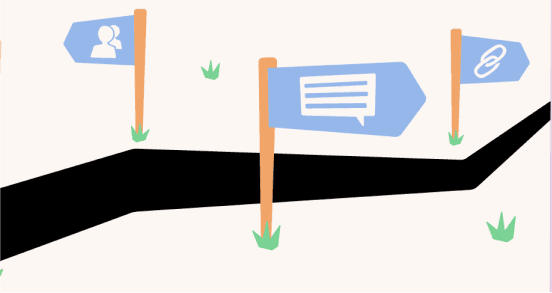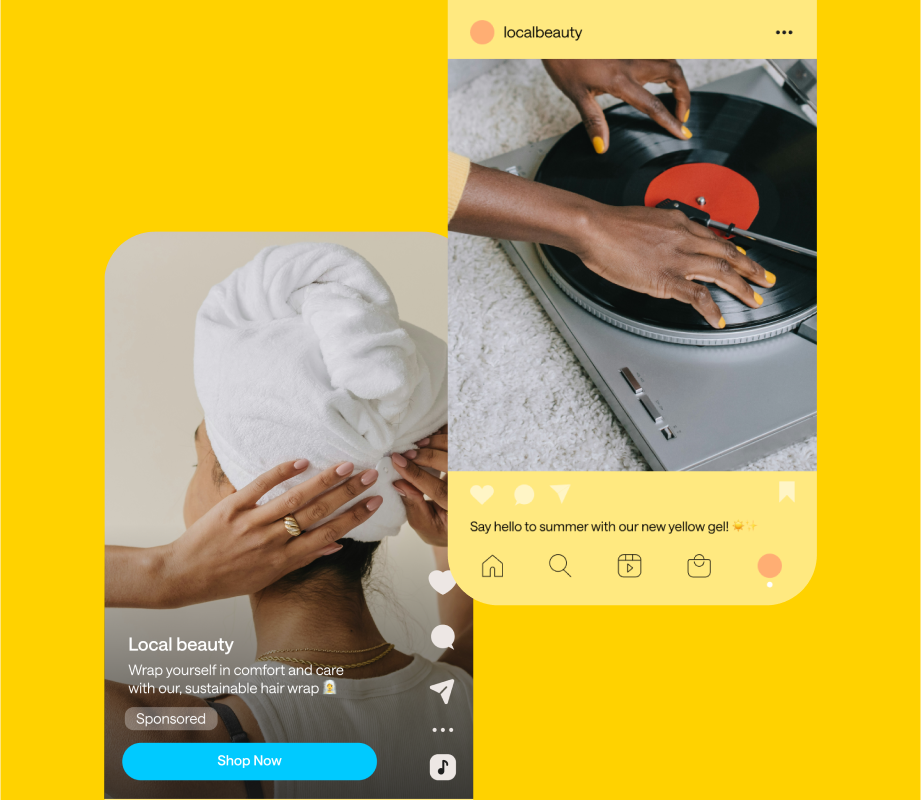Transcript
Introduction
Trying to create new content every single week can seriously be exhausting. If you've ever felt uninspired or have had no idea what to post, it's because you're missing one thing: content pillars. In today's video, we're going to be talking about how to use content pillars to build your social media strategy. But first, let's define what content pillars are.
Join over 1 million marketers to get social news, trends, and tips right to your inbox!
Email AddressDefining Content Pillars
Content buckets, content categories, whatever you want to call them...Content pillars are a core set of topics that form the foundation of what you'll discuss, amplify, and also create content for on social media. These are the key themes that your audience can expect to see from you consistently.
Why Content Pillars Are Important
So, why are content pillars important for your social media strategy? Well, first of all, having a clear focus on the topics that you want to cover helps you create more targeted and relevant content for your audience. It also helps you stand out in a crowded social media landscape by establishing your brand as a go-to source for information on those specific topics.
It also makes it easier to plan and schedule your content because it gives you a roadmap to follow. You'll always have a list of topics that you can touch on at a later date. Content pillars will also help you get clarity on your niche. If you show that you're an expert in one area or a few specific things on social media, this will help your audience grow faster. I think one thing to remember though is that your content pillars are going to be specific to your brand, but they can also cover a few other themes.
Example of Content Pillars in Action
So for example, let's say you're an independent bookstore. You can focus on new book releases, indie authors, cozy reading spots, and local coffee shops. Or, if you are a fashion content creator, your pillars can be street style, body positivity, beauty, and maybe mindset. So, how do you find your content pillars?
Step #1: Identify Business Goals
Let's start from the very first thing you should do, which is to identify your business goals and audience needs.
You're first going to want to figure out what are you trying to achieve with your social media presence. What value do you want to provide to your audience? If you can answer these questions, they will help you determine the themes that should be at the center of your content pillars. You can also consider what gaps exist in the current conversations in your industry and how your brand can fill in those gaps with unique and valuable content.
Keyword Research Tips
This is also a great time to do some keyword research, which will help you grow your audience faster and help out your social media SEO in the long run.
One of my favorite websites for keyword research is Answerthepublic.com. It's a great way to figure out what your audience's pain points might be, what they're searching for, and it also gives you some insight into what kind of content you can make to reach these people. Also, it is free, so that's a perk too.
For example, if I'm a content creator, and I want to see what other people in the US have been searching for in terms of fashion trends, I would just type them into answerthepublic.com like this. Then, I'd be able to see what people have been searching for in terms of fashion trends.
Step #2: Create a list of content pillars
Now that you've identified your business goals, you can now come up with a list of potential content pillars. Like I mentioned earlier, three to five pillars are ideal because this will let you find your niche without spreading yourself too thin.
Another example I can give is let's pretend I'm a content creator. If I was a content creator, my three pillars might be…
The first one could be education, so creating content that educates your audience on a particular topic or industry can be a really great way to establish yourself as a thought leader. It can also help build trust with your audience. This could include things like tutorials, explainer videos, or even blog posts.
All right, and my second pillar as a content creator could be entertainment. People often turn to the Internet for entertainment, so creating content that is fun, engaging, and funny can be a great way to attract and retain your audience. This could also include things like memes, reaction videos, or comedic skits.
My third pillar might be inspiration. Many people look to the Internet for inspiration and guidance. Creating content that motivates and encourages others can be a really powerful way to connect with your audience. This could include things like motivational quotes or personal stories of overcoming obstacles. If I wanted to, these three content pillars could be even further divided, specified, or even refined for different target audiences and niches.
Step #3: Create and plan your content calendar
All right, now once you've had your content pillars in place, it's time to start planning and scheduling your content. At Later, we plan all of our social media content in Google Sheets and Asana, where we outline the topics to cover and the dates that we will publish them.
We also, of course, use Later for all of our scheduling. The calendar view makes it extremely easy to see all of our upcoming posts across Instagram, Facebook, TikTok, and more. And it's really easy to just write your captions in advance.
One more thing to note is that it is important to consistently create and share content that aligns with the pillars you've chosen. This could include blog posts, social media posts, videos, and whatever else you might see fit. If you want even more tips on how to build out a content calendar, I'll link a super helpful video from our Later friend Christina Galbado, who shares exactly how she built out her own content calendar and what that looks like right over here. If you want even more content calendar and planning tips. I've linked a few super helpful blog posts down below.
The last and final thing I want to share before I head out is make sure that you're regularly reviewing and adjusting your content pillars as needed. As your brand grows and evolves, so should your content strategy. What you might be posting this year will probably be different than what you should be posting next year. And that's it! By following these steps and using content pillars as the foundation of your social media strategy, you'll be able to create a focused, consistent, and valuable presence on social.
Thank you for watching and do not forget to like and subscribe for more social media tips and tricks. I will see you next time!



